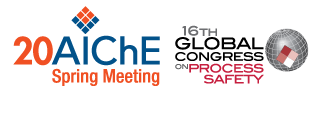

Understanding the requirements. When process safety regulations include AI/MI, they are typically written in very broad, performance-based language – even more so than other process safety elements. Interpretation of these broadly stated AI/MI requirements and the matching of these requirements to actual facility policies, practices, and procedures has been a difficult process. Also, the scope of AI/MI programs has expanded beyond what process safety regulations require in recent years, to include related issues that focus more on plant reliability than on process safety, e.g., vibration monitoring and risk based inspection.
Which RAGAGEPS? Defining which recognized and generally accepted good engineering practices (RAGAGEP) apply in the AI/MI program and how they are interpreted and used is not a simple task. This is because RAGAGEPs do not exist for all equipment types, particularly for inspection, testing, and preventive maintenance activities. The status of old RAGAGEPs that are no longer published or maintained is also a complication that needs to be resolved. Another complicating issue in interpreting the requirements in AI/MI program RAGAGEPs is “should†vs. “:shall†language. While this issue may seem straightforward it often represents a difficult series of choices for facilities.
The Effects of Culture. The prevailing process safety culture has a profound effect on the success or failure of an AI/MI program, and a sound underlying culture must be in place first. Since AI/MI activities are daily, if not hourly activities in a facility, the prevailing culture will constantly affect many of the activities, either positively or negatively. For example, not identifying and quickly correcting AI/MI deficiencies, such as chronic overdue inspection and testing tasks, or operating with a piping wall thickness reading at or below the retirement thickness are examples of allowing the normalization of deviance to persist.
This paper will explore these issues, including the interpretation issues that confound many sites, the responsibilities of various site personnel for executing AI/MI activities, typical weaknesses in AI/MI programs, and effect of the prevailing process safety culture.
Presenter(s)
Language
Pricing
Individuals
| AIChE Member Credits | 0.5 |
| AIChE Pro Members | $19.00 |
| Employees of CCPS Member Companies | Free |
| AIChE Graduate Student Members | Free |
| AIChE Undergraduate Student Members | Free |
| AIChE Explorer Members | $29.00 |
| Non-Members | $29.00 |
